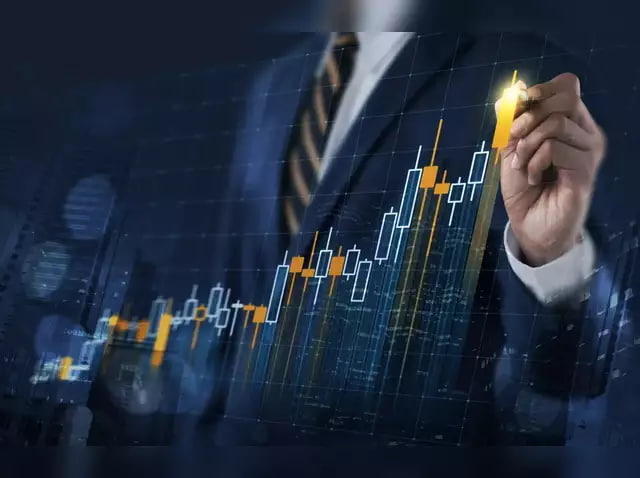Atlanta Fed's Bostic: A Bullish Outlook on Inflation's Descent to 2%? Let's Dive Deep!
Meta Description: Atlanta Fed President Raphael Bostic's optimistic inflation forecast sparks debate. This in-depth analysis explores Bostic's claims, examines underlying economic factors, and assesses the potential implications for investors and consumers. We dissect the complexities of inflation, offering expert insights and a nuanced perspective. Keywords: Atlanta Fed, Raphael Bostic, inflation, economic forecast, monetary policy, interest rates, consumer price index (CPI), GDP, recession risk.
The recent statement by Atlanta Federal Reserve President Raphael Bostic, expressing considerable confidence in the return of US inflation to its 2% target, has sent ripples through the financial world. Is this a bold prediction, a carefully calibrated message, or simply wishful thinking? The answer isn't straightforward. Bostic's comments, while seemingly optimistic, demand a deeper dive into the current economic landscape, considering the multifaceted nature of inflation and the inherent uncertainties in economic forecasting. This isn't just another news story; it's a critical examination of a pivotal figure's assessment of the US economy, an assessment that impacts every American's pocketbook and the global financial markets. We'll unravel the intricacies of Bostic's statement, exploring the data that supports (or contradicts) his view, and illuminating the potential consequences of his prediction on everything from interest rates to consumer spending. Get ready for a comprehensive analysis that cuts through the jargon and delivers clear, actionable insights. We'll examine the current inflation trends, discuss potential risks and opportunities, and provide you with the tools to navigate this crucial economic moment. Prepare to be informed, enlightened, and perhaps even a little surprised. This isn't just about numbers; it's about understanding the very fabric of our economic reality. The journey ahead promises to be both challenging and rewarding, as we together tackle the complexities that shape our financial future. So, buckle up, because we're about to embark on a fascinating exploration of inflation, the Fed, and the future of the American economy!
Atlanta Fed's Inflation Outlook: A Detailed Analysis
Bostic's statement, while optimistic, doesn't paint a simplistic picture. His confidence stems from a confluence of factors, some more concrete than others. Let's dissect his perspective, examining the data and the underlying assumptions.
Firstly, the recent slowdown in the Consumer Price Index (CPI) offers some support. While inflation remains stubbornly above the 2% target, the rate of increase has demonstrably slowed. This deceleration, however, is not uniform across all sectors. Energy prices, for instance, remain volatile, while the housing market, a significant component of CPI, continues to exhibit inflationary pressures. Therefore, simply pointing to CPI deceleration as conclusive evidence is an oversimplification. We need a more nuanced approach.
Secondly, the Federal Reserve's aggressive monetary policy tightening plays a crucial role. The series of interest rate hikes implemented by the Fed aims to cool down the economy and curb inflationary pressures. However, the impact of monetary policy is notoriously lagged, meaning its full effect may not be felt for several months, or even a year. This lag introduces substantial uncertainty into Bostic's prediction, making it difficult to definitively assess its accuracy. The effectiveness also depends on several factors like consumer and business confidence, which are hard to predict.
Thirdly, the ongoing global economic slowdown presents both challenges and opportunities. While a global recession could dampen US inflation, it also poses risks to domestic economic growth. This delicate balancing act highlights the complexity of inflation management in an interconnected global economy. It's a tightrope walk, and even small missteps can have significant repercussions.
Finally, supply chain disruptions, a major contributor to recent inflation, are gradually easing. While not completely resolved, the improvement in global supply chains suggests reduced inflationary pressures in the future. However, geopolitical uncertainties and potential future bottlenecks remain wildcards, casting a shadow over the predictability of this factor.
Understanding the Complexities of Inflation
Inflation isn’t a single, easily-defined entity; it’s a multifaceted beast influenced by a multitude of interlinked factors. Think of it as a complex ecosystem, where changes in one area ripple through the entire system, creating unpredictable outcomes. Here’s a breakdown of key elements:
- Demand-Pull Inflation: This occurs when aggregate demand exceeds aggregate supply, driving up prices. Think of it as too many dollars chasing too few goods.
- Cost-Push Inflation: This arises from increases in production costs, such as wages, raw materials, or energy. These increased costs are then passed on to consumers in the form of higher prices.
- Built-in Inflation: This is a self-perpetuating cycle where rising prices lead to higher wage demands, which in turn fuel further price increases. It's a vicious cycle that's tough to break.
| Factor | Impact on Inflation | Current Status |
|----------------------|-------------------------------------------------------|----------------------------------------------------|
| Demand | Increased demand leads to higher prices | Moderating, but still elevated |
| Supply Chains | Disruptions lead to higher prices | Gradually improving, but still vulnerable |
| Energy Prices | Volatile energy prices contribute to inflation | Somewhat stabilized, but subject to geopolitical risk |
| Wages | Rising wages contribute to cost-push inflation | Growing, but at a slower pace than earlier periods |
| Monetary Policy | Fed's actions aim to control inflation | Tightening, with potential for further adjustments |
The Role of the Federal Reserve
The Federal Reserve (Fed) plays a crucial role in managing inflation. Through its monetary policy tools, primarily interest rate adjustments and quantitative easing/tightening, the Fed attempts to influence aggregate demand and control inflation. However, the Fed's actions aren't instantaneous; there’s a significant time lag between policy changes and their impact on the economy. Furthermore, the effectiveness of monetary policy is subject to various external factors beyond its control. It’s a constant juggling act, balancing the need to control inflation with the desire to avoid triggering a recession.
Potential Risks and Opportunities
While Bostic's optimism is understandable, several risks could derail the return to 2% inflation. Unexpected geopolitical events, a resurgence of supply chain disruptions, or a renewed surge in consumer demand could all push inflation higher. On the other hand, the ongoing slowdown in economic growth could lead to disinflation or even deflation, presenting its own set of challenges. Investors and consumers alike need to remain vigilant and adapt their strategies to the evolving economic landscape.
Frequently Asked Questions (FAQs)
Q1: How reliable is Bostic's prediction?
A1: Bostic's prediction is based on current economic data and projections, but economic forecasting is inherently uncertain. Unforeseen events can easily alter the course of inflation.
Q2: What are the potential consequences of inflation staying above 2%?
A2: Persistent high inflation erodes purchasing power, reduces savings, and creates economic uncertainty, potentially impacting investment decisions and consumer confidence.
Q3: What role does the labor market play in managing inflation?
A3: A tight labor market (low unemployment) can lead to upward pressure on wages, contributing to cost-push inflation.
Q4: How does the Fed's monetary policy impact the broader economy?
A4: The Fed's actions affect interest rates, borrowing costs, and investment decisions, influencing economic growth and inflation.
Q5: What are the risks of overly aggressive monetary tightening?
A5: Aggressive tightening can slow economic growth too much, potentially leading to a recession.
Q6: What can individuals do to protect themselves from inflation?
A6: Individuals can diversify their investments, consider inflation-protected securities, and potentially adjust their spending habits.
Conclusion
Bostic's confident outlook on inflation's descent to 2% is a significant statement, but not a guaranteed outcome. The economic landscape is complex and subject to numerous unpredictable variables. While the recent slowdown in CPI offers some encouragement, several risks remain. Careful monitoring of economic indicators and a nuanced understanding of inflation's multifaceted nature are crucial for both policymakers and individuals navigating these uncertain times. The situation calls for vigilance, adaptability, and informed decision-making. The road to 2% inflation is likely to be a bumpy one, requiring continuous adjustments and a proactive approach to managing both personal finances and economic risks.



